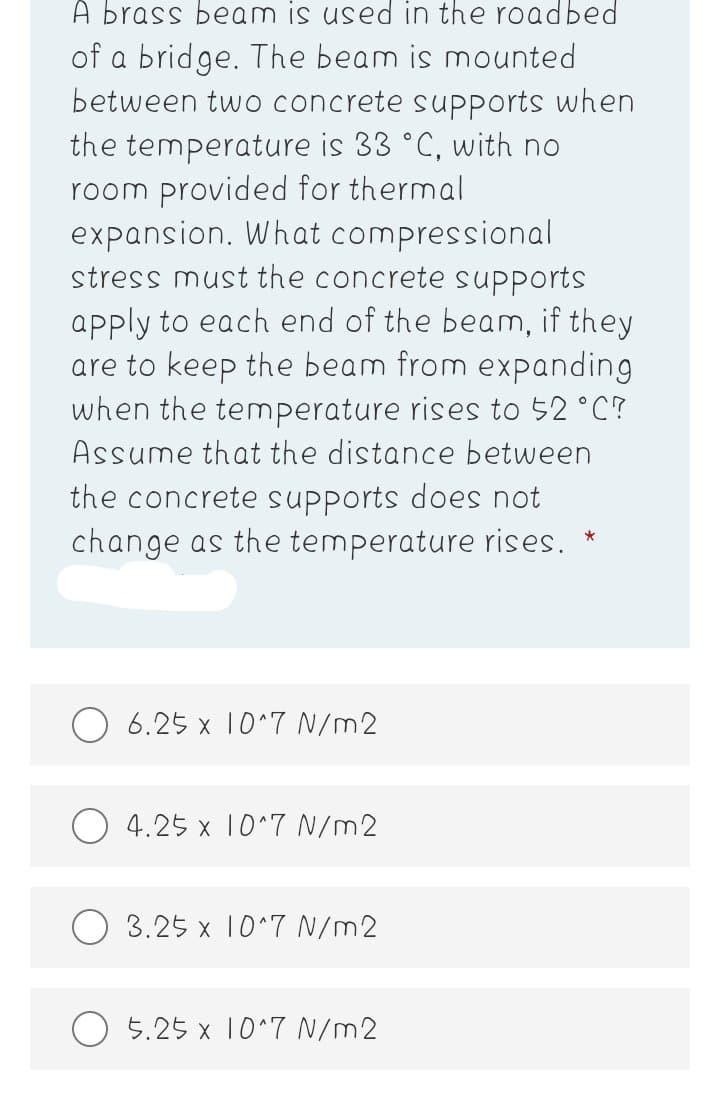A brass beam is used in the roadbed of a bridge. The beam is mounted between two concrete supports when the temperature is 33 °C, with no room provided for thermal expansion. What compressional stress must the concrete supports apply to each end of the beam, if they are to keep the beam from expanding when the temperature rises to 52 °C? Assume that the distance between the concrete supports does not change as the temperature rises. * 6.25 x 10*7 /m2 4.25 x 10*7 N/m2 3.25 x 10 7 N/m2 5.25 x 10^7 N/m2
A brass beam is used in the roadbed of a bridge. The beam is mounted between two concrete supports when the temperature is 33 °C, with no room provided for thermal expansion. What compressional stress must the concrete supports apply to each end of the beam, if they are to keep the beam from expanding when the temperature rises to 52 °C? Assume that the distance between the concrete supports does not change as the temperature rises. * 6.25 x 10*7 /m2 4.25 x 10*7 N/m2 3.25 x 10 7 N/m2 5.25 x 10^7 N/m2
Related questions
Question

Transcribed Image Text:A brass beam is used in the roadbed
of a bridge. The beam is mounted
between two concrete supports when
the temperature is 33 °C, with no
room provided for thermal
expansion. What compressional
stress must the concrete supports
apply to each end of the beam, if they
are to keep the beam from expanding
when the temperature rises to 52 °C?
Assume that the distance between
the concrete supports does not
change as the temperature rises.
6.25 x 10^7 /m2
4.25 x 10*7 N/m2
O 3.25 x 10^7 N/m2
5.25 x 10*7 N/m2
Expert Solution
This question has been solved!
Explore an expertly crafted, step-by-step solution for a thorough understanding of key concepts.
Step by step
Solved in 2 steps
